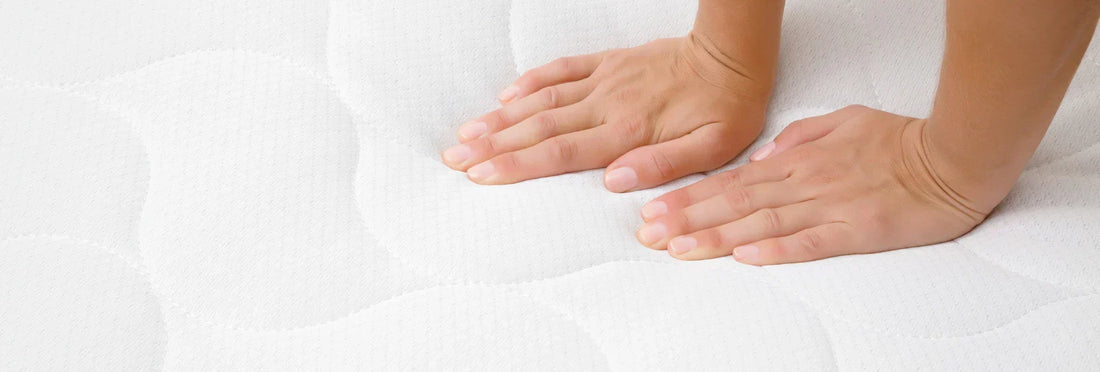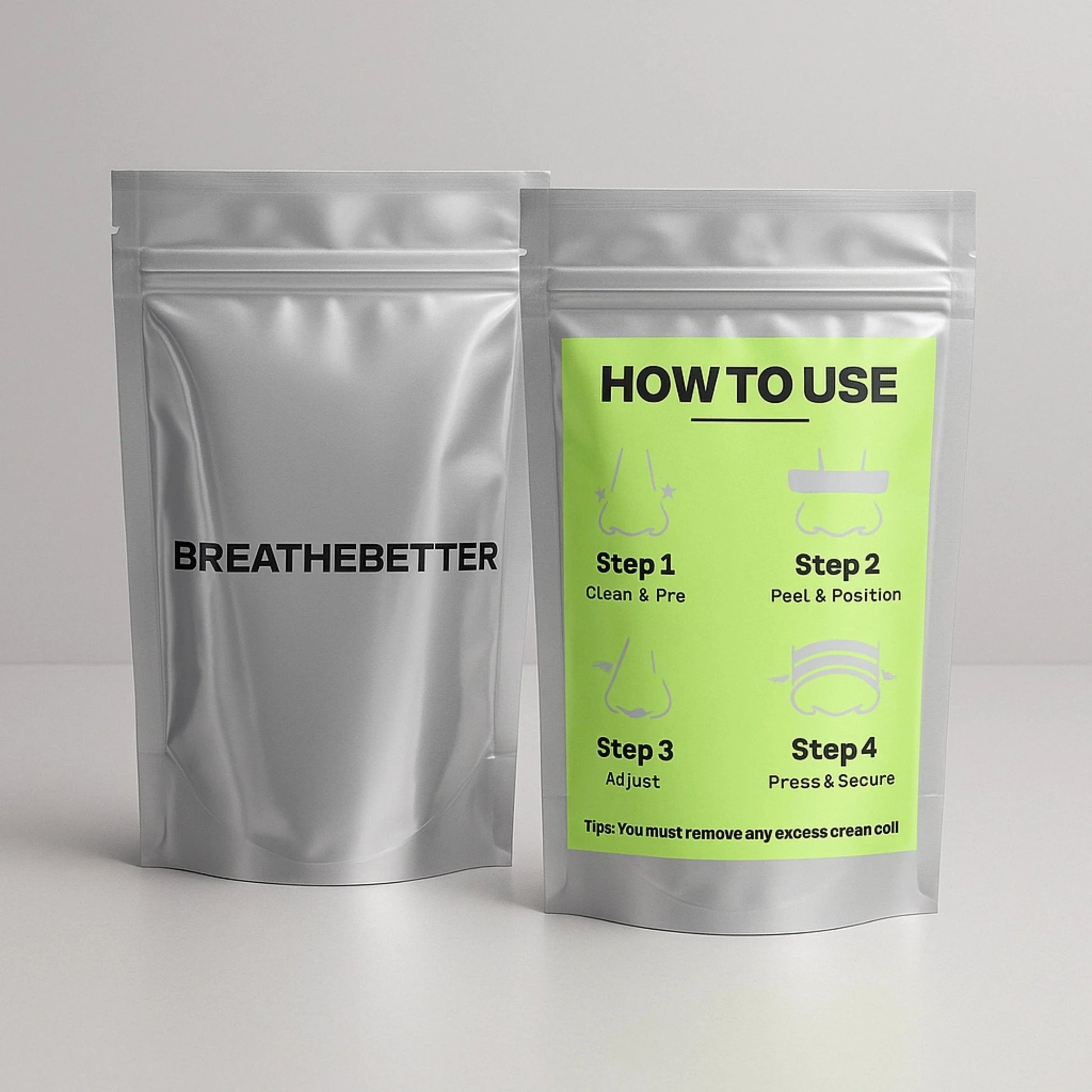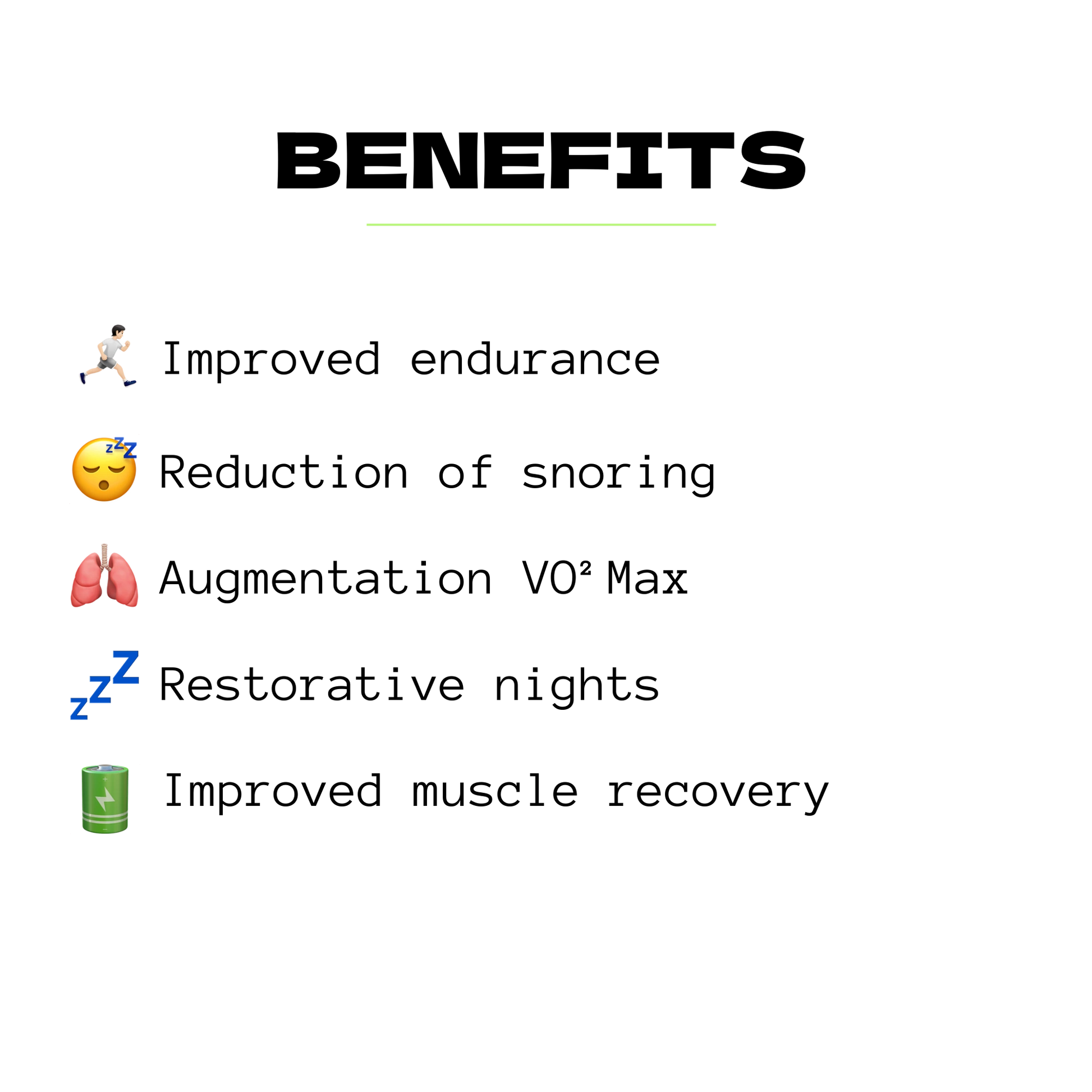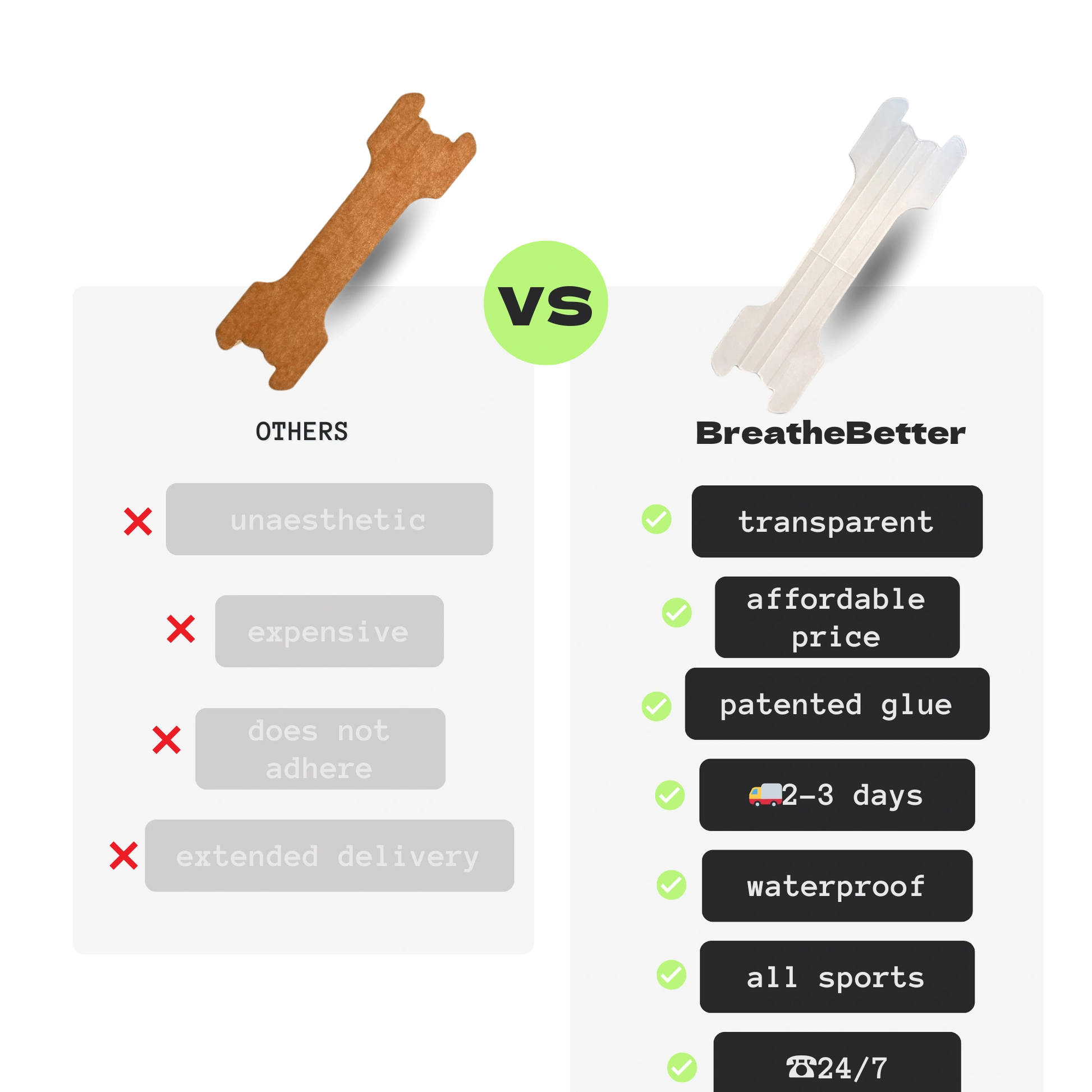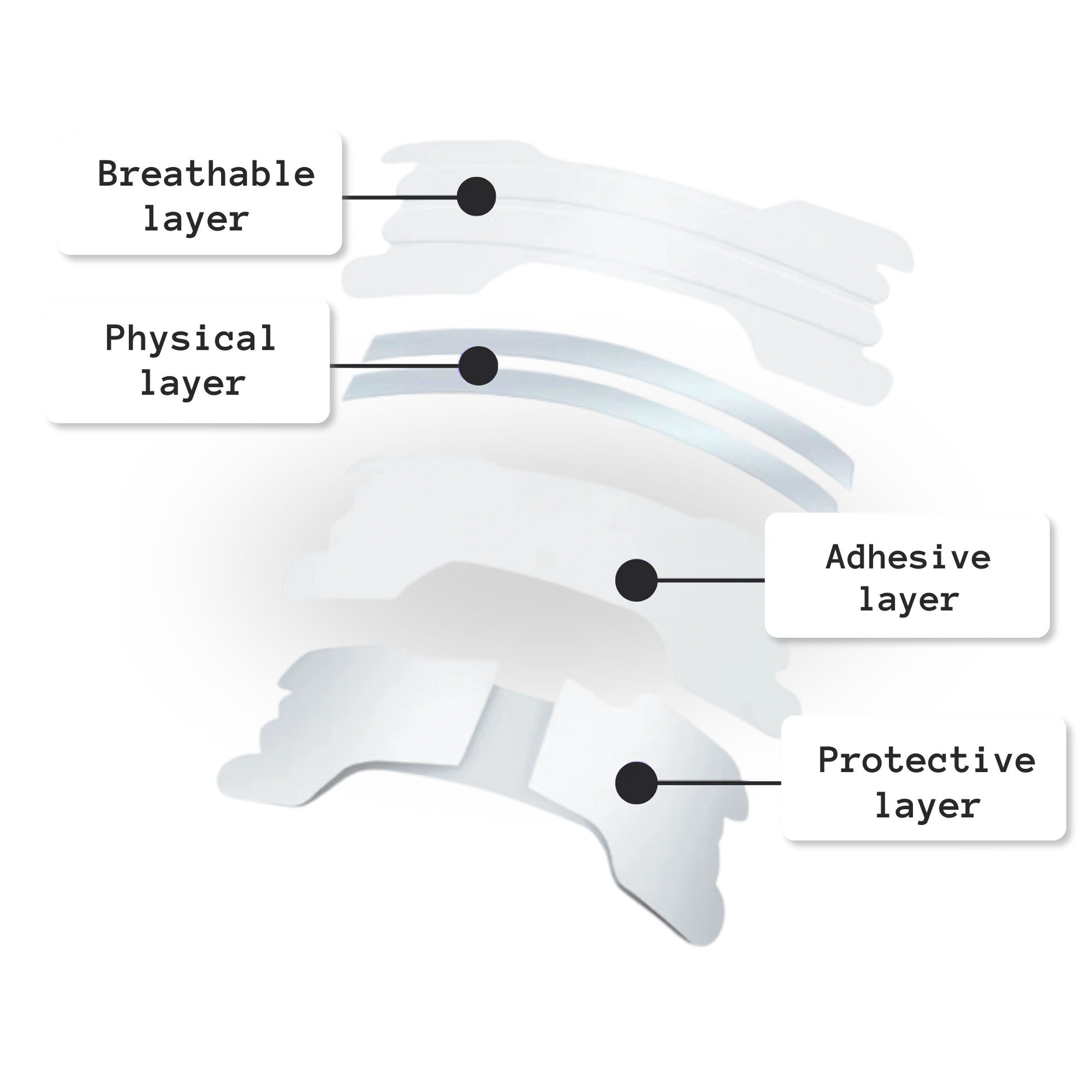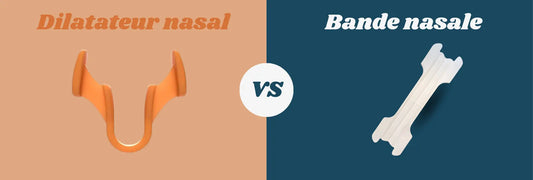← Back to the BreatheBetter blog
Do you suffer from back pain as soon as you wake up and are wondering how to choose the right mattress to finally get a good night's sleep? A mattress that's suited to your body shape and sleeping habits is essential for preventing and relieving lower back pain. In this guide, we share our tips for choosing a mattress that provides optimal support, reduces pressure points, and wakes up without aches and pains.
To remember
- Firmness: Choose a medium-firm to firm mattress (rating 6–8/10).
- Ergonomic support: memory foam or hybrid with pocket springs.
- Adapted to your body shape: taking into account your weight and your sleeping position.
- Trial and guarantee: choose a mattress with a trial period ≥ 100 nights.
- Internal mesh: explore our guides on ergonomic mattresses and box spring choices.
Why does a suitable mattress relieve back pain?
An ergonomic mattress evenly distributes body weight and preserves the natural curvature of the spine. Without adequate support, pressure points appear, leading to stiffness and pain upon waking.
How to choose a good mattress to relieve back pain?
Firmness is measured on a scale of 1 (very soft) to 10 (very firm). For a sensitive back , aim for a 6 to 8: firm enough to support, soft enough to cushion.
Factors to consider
- Sleeper weight: The more you weigh, the greater the required firmness.
- Sleeping position: side (softer), back (medium-firm), front (firm).
- Body temperature: Some memory foams harden in the cold.
← Back to the BreatheBetter blog
Do you suffer from back pain as soon as you wake up and are wondering how to choose the right mattress to finally get a good night's sleep? A mattress that's suited to your body shape and sleeping habits is essential for preventing and relieving lower back pain. In this guide, we share our tips for choosing a mattress that provides optimal support, reduces pressure points, and wakes up without aches and pains.
To remember
- Firmness: Choose a medium-firm to firm mattress (rating 6–8/10).
- Ergonomic support: memory foam or hybrid with pocket springs.
- Adapted to your body shape: taking into account your weight and your sleeping position.
- Trial and guarantee: choose a mattress with a trial period ≥ 100 nights.
- Internal mesh: explore our guides on ergonomic mattresses and box spring choices.
Why does a suitable mattress relieve back pain?
An ergonomic mattress evenly distributes body weight and preserves the natural curvature of the spine. Without adequate support, pressure points appear, leading to stiffness and pain upon waking.
How to determine the firmness of a mattress?
Firmness is measured on a scale of 1 (very soft) to 10 (very firm). For a sensitive back , aim for a 6 to 8: firm enough to support, soft enough to cushion.
Factors to consider
- Sleeper weight: The more you weigh, the greater the required firmness.
- Sleeping position: side (softer), back (medium-firm), front (firm).
- Body temperature: Some memory foams harden in the cold.

Types of mattresses for back pain
| Kind | Benefits | Disadvantages |
|---|---|---|
| Memory foam | Excellent adaptation Reduction of pressure points |
Heat retention Sinking sensation |
| Pocket springs | Good ventilation Zoned support |
Less insulating Noisy when worn |
| Hybrid | Best of both worlds Support and comfort |
High price |
Sources: Study on mattress firmness and back pain .
How to test a mattress before buying?
Choose a trial period of at least 100 nights and a 10-year warranty. Take advantage of this opportunity to test the product in real-life conditions: lateral and dorsal positions, and a minimum rest period of 30 nights.
Maintenance and lifespan
Flip or rotate your mattress every 3 months to prevent sagging and uneven wear. A good mattress should maintain its support for at least 8 years.
Conclusion
Choosing the right mattress to relieve your back pain means combining firmness , ergonomic support , and a trial period . By following these tips, you'll maximize your comfort, reduce pain, and enjoy your nights again.

